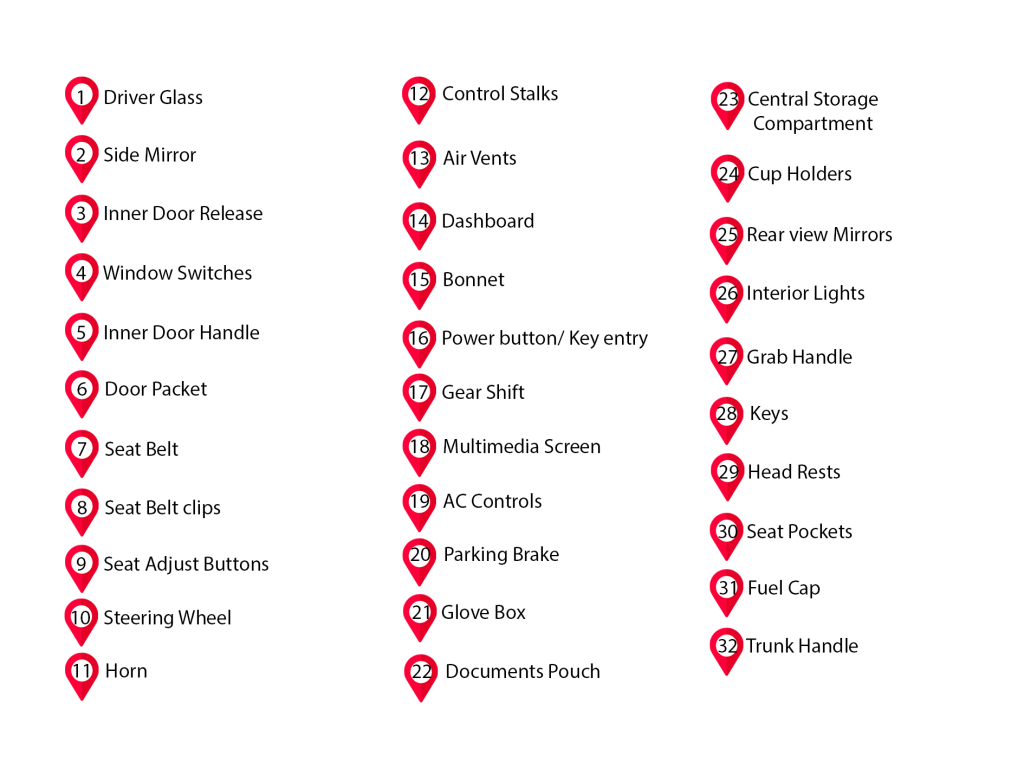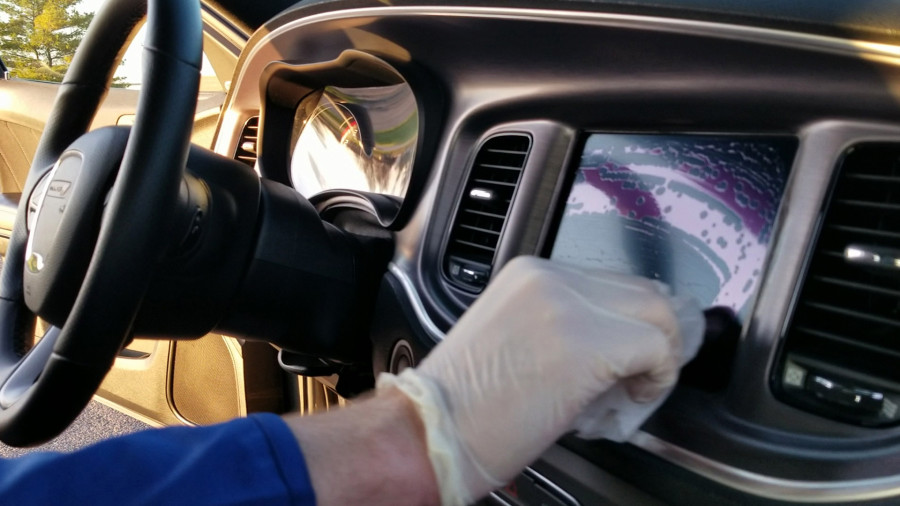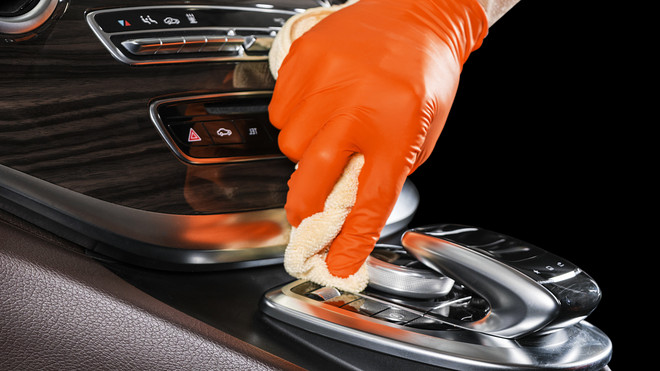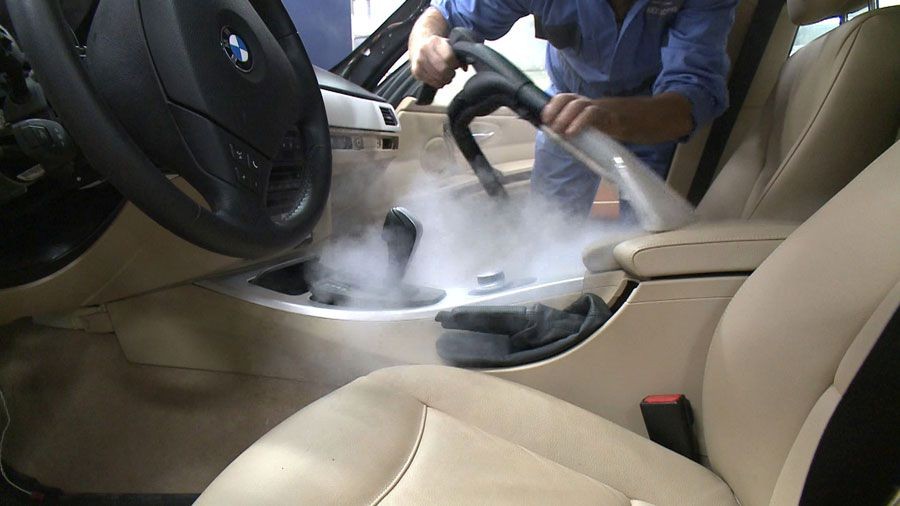CURRENT INFORMATION CONCERNING CORONAVIRUS (COVID-19)
Understanding the Health Hazards of COVID-19
Today and everyday your and our employees’ well-being and safety is our Top Priority!
As a provider of essential transportation services we are committed to helping you to get to essential places. Some of the measures we are taking to ensure the highest standards are
We intensively clean our branches to minimize virus transmission.
We ensure that our employees follow the recommendations of Health Canada, such as washing their hands intensively on a regular basis and wear gloves.
All vehicles in our fleet are professionally cleaned in a multi-step process in between each rental to minimize the potential risk of transmission.
We sanitize anything that gets touched inside and outside of our vehicles in between each rental.
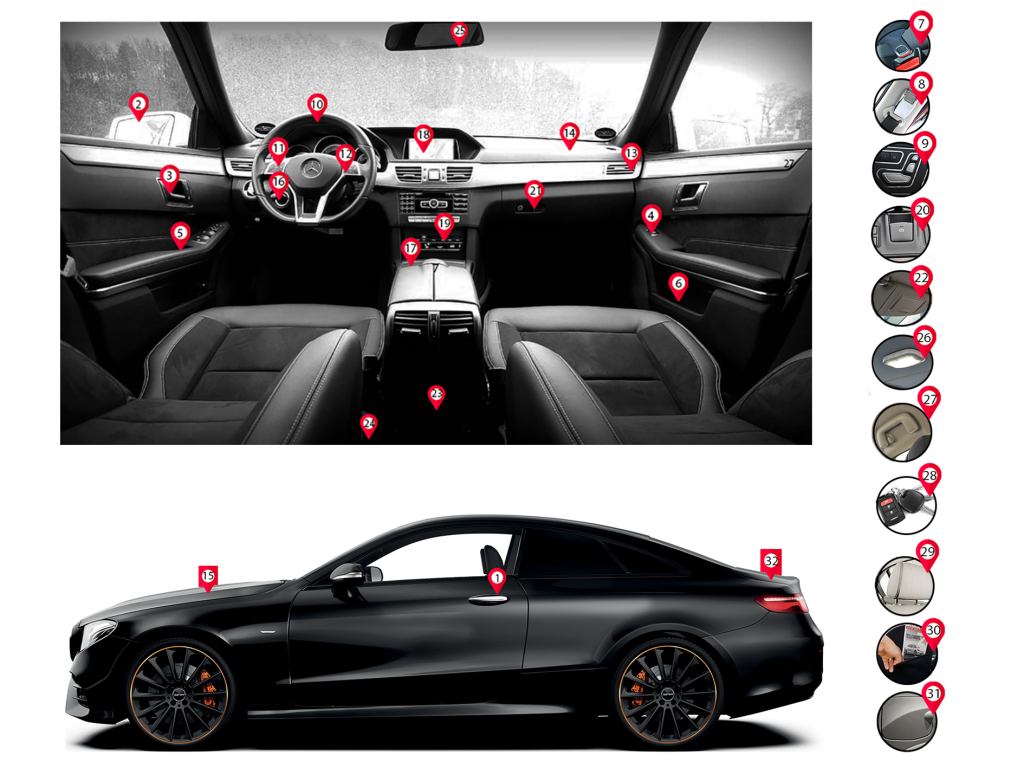
Common Car Touchpoints (This Is Not an Exhaustive List)
- Key/remote
- Door handle(s)
- Liftgate or trunk release handle
- Engine start button
- Seat adjustment controls (and seat memory buttons)
- Rear-view mirror
- Side mirror controls
- Whole steering wheel, buttons and tilt/telescope adjustment
- Turn signal and wiper stalks
- Seat belt buckle (receptacle and tongue)
- Shifter
- Touchscreen
- All dashboard controls
- Any center console controls
- Overhead controls
- Grab handles
- Armrests, center console latch
- Glove box, vents, etc.
The health and safety of our community is our top priority. Advantage Car Rentals encourages all Canadians to practice social distancing in accordance with recommendations by Health Canada and avoid non-essential travels. It’s up to all of us to help prevent the spread of COVID-19.
Your safety is our highest priority and we truly appreciate the trust that you place in our team and our company.
Coronaviruses are a large family of viruses found mostly in animals. In humans, they can cause diseases ranging from the common cold to more severe diseases such as Severe Acute Respiratory Syndrome (SARS) and Middle East Respiratory Syndrome (MERS). The disease caused by the new coronavirus has been named COVID-19.
While many of the characteristics of COVID-19 are still unknown, mild to severe illness has been reported for confirmed cases.
What is COVID-19?
Symptoms The symptoms of COVID-19 are similar to other respiratory illnesses including the flu and common cold. They include: fever, chills, cough, shortness of breath, sore throat and painful swallowing, stuffy or runny nose, loss of sense of smell, headache, muscle aches, fatigue and loss of appetite. Other symptoms have been reported such as skin rash and gastrointestinal symptoms.
Transmission Three primary routes of transmission are considered likely with COVID-19, all of which need to be controlled. These include contact, droplet, and droplet transmission in the air after a cough or sneeze.
Direct contact involves skin-to-skin contact, for example: shaking hands, hugging, helping with personal hygiene, etc. Indirect contact involves a worker touching a contaminated intermediate object such as a table, doorknob, telephone, or computer keyboard, and then touching the eyes, nose, or mouth. Contact transmission is important to consider because COVID-19 viruses may persist for minutes on hands and potentially hours on surfaces.
Droplet transmission Large droplets may be generated when an infected person coughs or sneezes. Droplets travel a short distance (one to two metres) through the air and can be deposited on inanimate surfaces or in the eyes, nose, or mouth of other persons in close proximity.
Airborne transmission
Airborne (inhalable) particles can be generated from coughs and sneezes. Coughs and sneezes produce both large droplets and smaller airborne particles. The smaller particles remain suspended in air for longer periods and can be inhaled. The large droplets can also evaporate quickly to form additional inhalable particles. As the distance from the person coughing or sneezing increases, the risk of infection from airborne exposure is reduced; but it can still be a concern in smaller, enclosed areas, especially where there is limited ventilation. As the number of infected people in a room increases, the risk of infection can increase.
First level protection (elimination)
Elimination involves removing the risk of exposure entirely from the workplace. For example, policies and procedures can be implemented to limit the number of people in the workplace at any one time and to keep workers at least 2 metres (6 feet) from co-workers, customers and others.
Second level protection (engineering controls)
Engineering controls involve making physical changes in the workplace. For example, if you can’t always maintain physical distancing, barriers such as plexiglass will be installed to separate people.
Third level protection (administrative controls)
Administrative controls involve altering work practices to minimize the risk of exposure. For example, rules and guidelines may be established such as cleaning protocols, telling workers to not share tools, or implementing one-way doors or walkways.
Responsibilities of Workplace Parties
Employer responsibilities
Our company will:
• Ensure that the materials (for example, masks, alcohol-based hand rubs, and washing facilities) and other resources (for example, worker training materials) required to implement and maintain the plan are readily available where and when they are required.
• Select, implement, and document the appropriate site-specific control measures. • Ensure that company staff are educated and trained to an acceptable level of competency.
• Ensure that company staff use appropriate personal protective equipment (PPE) — for example, masks if required.
• Conduct a periodic review of the plan’s effectiveness. This includes a review of the available control technologies to ensure that these are selected and used when practical.
• Maintain records of training and inspections.
• Ensure that a copy of this Safety Plan is available to company staff.
Supervisor responsibilities
Our supervisors will:
• Ensure that company staff are adequately instructed on the controls for the hazards at the location.
• Ensure that company staff use personal protective equipment as required.
• Direct work in a manner that eliminates or minimizes the risk to company staff.
Company Staff responsibilities
Company staff will:
• Know the hazards of the workplace.
• Follow established work procedures as directed by the employer or supervisor.
• Use any required PPE as instructed.
• Report any unsafe conditions or acts to their supervisor.
• Know how and when to report exposure incidents.
Company Safety Protocols
The following company safety protocols are organized into:
• General safety protocols;
• Vehicle Rental activity-related safety protocols that are specific to our workplace and are intended to ensure the safety of all company staff and customers by minimizing the risk of COVID-19 transmission as they carry out their routine daily activities.
General Safety Protocols
Hand washing
Hand washing is one of the best ways to minimize the risk of infection. Proper hand washing helps prevent the transfer of infectious material from the hands to other parts of the body — particularly the eyes, nose, and mouth — or to other surfaces that are touched.
• Wash your hands immediately:
• Before leaving a work area
• After handling materials that may be contaminated
• Before eating, drinking, smoking, handling contact lenses, or applying makeup
Hand washing procedure:
Use soap and warm running water. (It doesn’t have to be hot to do the job.) If water is unavailable, use a waterless hand cleanser that has at least 60% alcohol. Follow the manufacturer’s instructions on how to use the cleanser. Alcohol-based hand cleanser dispensers and wipes are located at various locations throughout the company.
Cough/sneeze etiquette
Company Staff are expected to follow cough/sneeze etiquette, which is a combination of measures that minimizes the transmission of diseases via droplet or airborne routes. Cough/sneeze etiquette includes the following components:
- Cover your mouth and nose with a sleeve or tissue when coughing or sneezing.
- Use tissues to contain secretions, and dispose of them promptly in a waste container.
- Turn your head away from others when coughing or sneezing.
- Wash hands regularly.
Physical distancing
Together, we can slow the spread of COVID-19 by making a conscious effort to keep a physical distance between each other. Social distancing is proven to be one of the most effective ways to reduce the spread of illness during an outbreak.
To appropriately meet social distance requirements, company staff should keep a distance of at least 2 arms lengths (approximately 2 metres) from others, as much as possible.
Other physical distancing measures that should also be followed include:
- Avoiding crowded places and cancel gatherings (e.g., in-person meetings, assemblies and sports events).
- Avoiding common greetings, such as handshakes.
- Limiting contact with people at higher risk (e.g. older adults and those in poor health).
- No sharing of foods or drinks
Use of cloth masks
A mask is a protective barrier that is worn on the face, covers at least the nose and mouth, and is used to contain large droplets generated during coughing and sneezing by the person using the mask. Masks help minimize the spread of potentially infected material from the wearer to other people. Company staff may choose to wear their own cloth masks if they wish but the most important mechanisms at this time for protection from COVID-19 is social distancing, frequent hand hygiene, avoiding touching one’s face and cough etiquette.
What to do if you have COVID-19 symptoms
Developing Symptoms
If a company staff develops symptoms of COVID-19 recognized by Ministry of health while at the office, they must immediately don a mask, notify the Human Resources Manager and return home.
If a company staff develops symptoms after having been at work, they must immediately notify the Human Resources Manager and remain at home.
Human Resources will interview the staff to determine what interactions, if any, they may have had with others in the workplace, where in the workplace they had been working and what workplace items, tools or equipment they used or had contact with when at work (e.g. door handles, photocopiers, computers, office phones, etc.). The staff will be advised that those employees will be told they may have been exposed, but the name of the company staff will not be disclosed unless absolutely necessary.
If applicable, the Human Resources Manager will notify those other employees identified by the reporting company staff that they may have had an exposure to COVID-19. The reporting staff will be advised when these conversations have taken place and will be told what information was provided. Disclosures should be minimized to information necessary to address risk.
The Company will ensure that the reporting employee’s workspace, other places in the workplace they may have attended, and any other workplace items, tools or equipment they used or had contact with when at work are promptly cleaned and disinfected.
Contacting Public Health for Testing
Company staff who develop symptoms of COVID-19 recognized by the health authorities, l must immediately contact public health or their physician for advice on being tested.
If advised to submit to a test, company staff must do so and report their situation to the Human Resources Manager.
Self-Isolation at Home
If the company staff is tested, they must self-isolate at home until the results of the test are known. If the test results come back negative, the company staff must seek medical advice on when they may return to the Office.
If a test is either not available or not recommended, the company staff must self-isolate at home for a minimum of 10 days from the onset of symptoms, and until their symptoms are completely resolved (i.e. it may be longer than the minimum 10 days). Self-isolating individuals should call public health (8-1-1) or their personal physician for medical advice and for advice on when they are fit to safely return to work.
Company staff who live in the same household as a person with confirmed or clinical COVID-19 symptoms who is self-isolating must self-isolate and not return to work until cleared to do so by the public health officials.
Company Staff returning to Ontario from outside Canada must self-isolate and monitor for symptoms for 14 days after their return. Returning travelers who develop COVID-19 symptoms during the period of self-isolation are required to self-isolate for a further period of 10 days after the onset of symptoms, or until symptoms resolve, whichever is later.
Company Staff who are self-isolating should stay in regular contact with the Human Resources Manager regarding the ongoing status of their condition.
Sick Leave
Our current policy is that company staff who are unable to work due to illness are provided with paid sick leave. Lengthy sick leaves are dealt with on a case by case basis.
Returning to Work After Self-Isolation
Company staff who are self-isolating are not to return to work until
- they are cleared to do so by public health officials
- they have notified the Human Resources Manager that they have received the required clearance, and
- the Company has approved their return to work
Mental well-being during COVID-19
Some company staff may be affected by the anxiety and uncertainty created by the COVID-19 outbreak. It’s important to remember that mental health is just as important as physical health, and to take measures to support mental well-being.
Company Safety Protocols
Limits on Number of Company Staff in the Office
The company will limit the number of people who are attending each location at any given time in accordance with public health guidance.
Symptom Free Confirmation Prior to Attending Offices
- Prior to attending the office on any given day, a Company Staff who has pre-scheduled their attendance must confirm using an electronic communication to be provided by the company that they will attend the office as scheduled and are symptom free.
- Human Resources will track attendance and will confirm those who attend the office are symptom free.
Office Access
- Wash or sanitize your hands before entering the office. Hand sanitizer will be provided at all entrances and at elevators as and when available.
- Signage is posted at all entrances restricting access to those who are exhibiting symptoms of COVID-19.
Shared Equipment
- Non-essential equipment and supplies (such as pens, staplers, hole punches) will be removed from communal spaces.
- Shared equipment such as printers, copiers, fax machines must be disinfected after each use.
- Hands must be washed or sanitized after using shared items.
- Cleaning supplies and wipes will be provided at all shared equipment.
- Signs will be posted to remind everyone of procedures for using and cleaning equipment.
Cleaning
- There will be increased cleaning of high touch surfaces throughout the day.
- Every vehicle has to fulfill the Advantage Cleaning Standard. This means that before we rent any vehicle, they are professionally cleaned in a multi-step cleaning process that follows the guidelines of Ontario Ministry of Health. This incorporates the latest products, including disinfectants, to minimize the risk of germ transmission.
- There will be increased cleaning, disinfecting and sanitizing of 32 hotspots of company vehicles.
Washrooms
- Advantage has posted requirements for washrooms which include physical distancing and wearing a mask.
- In order to ensure physical distancing, the maximum number of people at a time is two (2), with the following guidelines:
- At least 1 person must be in a stall/urinal; and
- The other person is physically distanced from the first person (e.g. in a stall with another stall between them, or at the sink area washing their hands.)
- At all locations signs has been posted which indicates: “Maximum Occupancy: 2; maintain 2 metres distance”
- The Customer washrooms will be used for customers only to allow for additional cleaning.
Visiting Other Workplaces
If visiting other workplaces in the course of your duties:
- complete a symptom free confirmation
- wear a mask and gloves to be prepared to respect safety rules in that workplace
- drive alone
- limit personal belongings taken into another workplace
- sanitize hands on arrival
- limit the amount of time you spend there
- meet in an open space with good air ventilation
- visit only one location a day
- keep a record of workplaces you visited and who you came into contact with at that workplace.
Company Staff Training
All Company Staff will attend a virtual training session on this COVID Safety Plan. Training will be refreshed regularly.
Record Keeping
Human Resources will keep relevant records such as records of attendance at the office, remote work, symptom free confirmations, reported symptoms, self-isolation, sick leave etc. Privacy obligations will be respected concerning this information.
Monthly Review
This Safety Plan will be reviewed regularly and at least once a month during the covid-19 pandemic.
